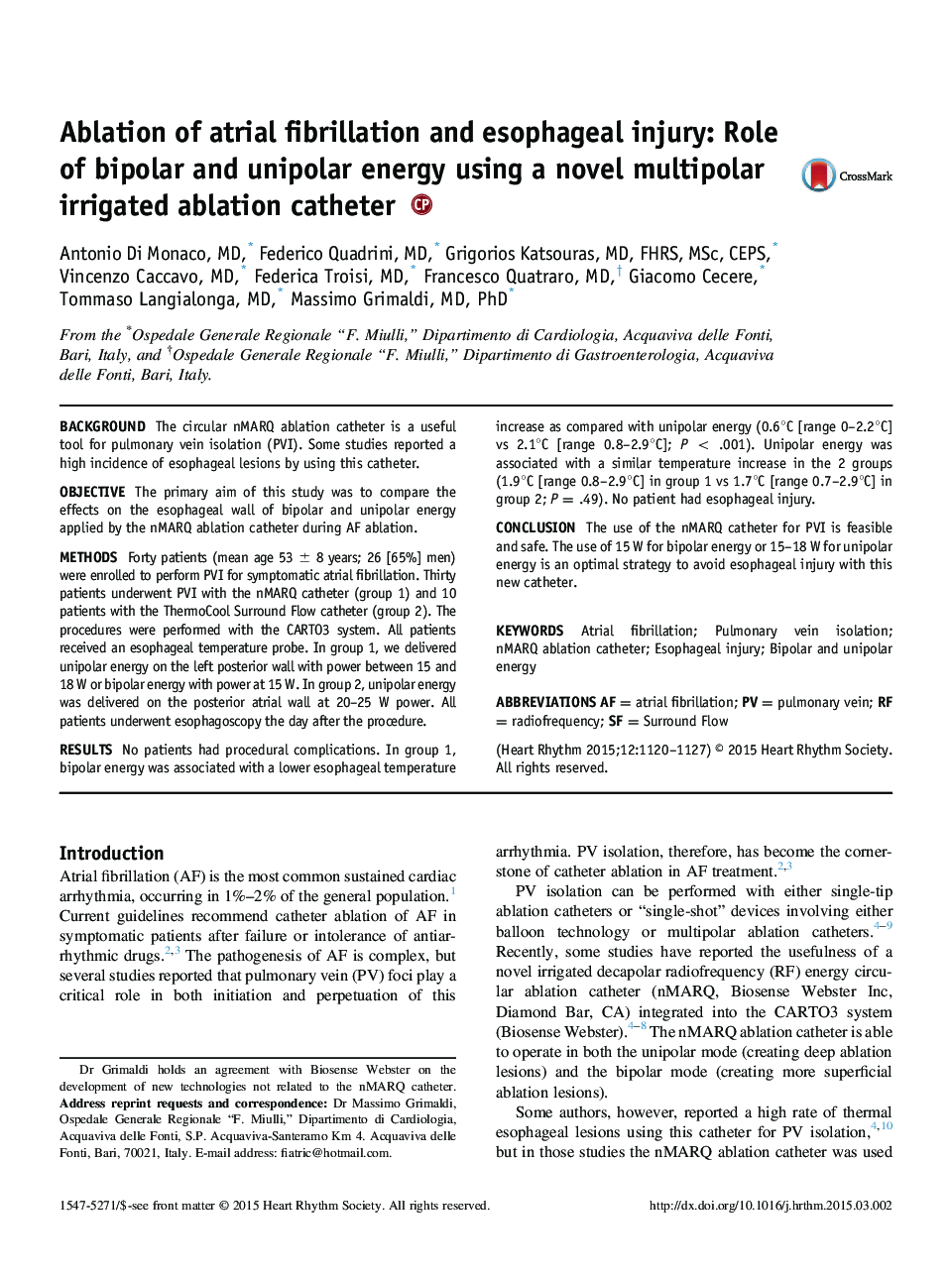| Article ID | Journal | Published Year | Pages | File Type |
|---|---|---|---|---|
| 5960127 | Heart Rhythm | 2015 | 8 Pages |
BackgroundThe circular nMARQ ablation catheter is a useful tool for pulmonary vein isolation (PVI). Some studies reported a high incidence of esophageal lesions by using this catheter.ObjectiveThe primary aim of this study was to compare the effects on the esophageal wall of bipolar and unipolar energy applied by the nMARQ ablation catheter during AF ablation.MethodsForty patients (mean age 53 ± 8 years; 26 [65%] men) were enrolled to perform PVI for symptomatic atrial fibrillation. Thirty patients underwent PVI with the nMARQ catheter (group 1) and 10 patients with the ThermoCool Surround Flow catheter (group 2). The procedures were performed with the CARTO3 system. All patients received an esophageal temperature probe. In group 1, we delivered unipolar energy on the left posterior wall with power between 15 and 18 W or bipolar energy with power at 15 W. In group 2, unipolar energy was delivered on the posterior atrial wall at 20-25 W power. All patients underwent esophagoscopy the day after the procedure.ResultsNo patients had procedural complications. In group 1, bipolar energy was associated with a lower esophageal temperature increase as compared with unipolar energy (0.6°C [range 0-2.2°C] vs 2.1°C [range 0.8-2.9°C]; P < .001). Unipolar energy was associated with a similar temperature increase in the 2 groups (1.9°C [range 0.8-2.9°C] in group 1 vs 1.7°C [range 0.7-2.9°C] in group 2; P = .49). No patient had esophageal injury.ConclusionThe use of the nMARQ catheter for PVI is feasible and safe. The use of 15 W for bipolar energy or 15-18 W for unipolar energy is an optimal strategy to avoid esophageal injury with this new catheter.
